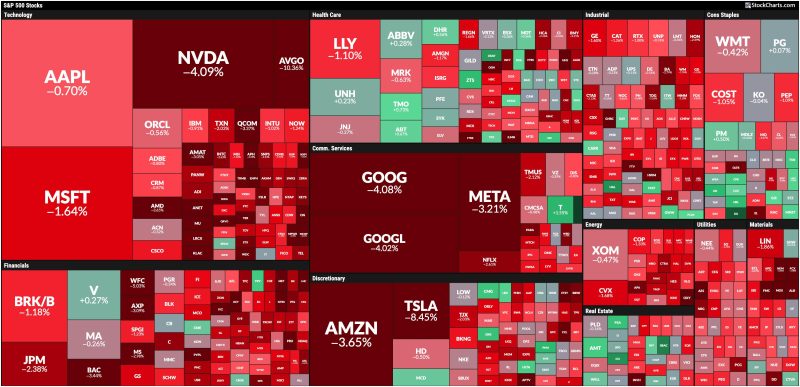Broad-Based Stock Market Selloff: How to Position Your Portfolio
Understand the Market Environment
It is crucial to start by gaining a deep understanding of the current market environment before making any decisions regarding your portfolio. A broad-based stock market selloff is characterized by a significant and widespread decline in stock prices across various sectors and industries. This can be triggered by various factors such as economic indicators, geopolitical events, or market sentiment.
Assess Your Portfolio’s Vulnerabilities
During a broad-based stock market selloff, all asset classes may be impacted to some extent. Therefore, it is important to assess your portfolio’s vulnerabilities and identify areas that may be particularly susceptible to market downturns. This includes understanding the exposure of your portfolio to different assets, industries, and regions.
Diversify Your Portfolio
Diversification is a key strategy to mitigate risks during a stock market selloff. By spreading your investments across different asset classes, industries, and regions, you can reduce the impact of market volatility on your portfolio. Consider diversifying your holdings into equities, fixed income securities, commodities, and alternative investments to spread out risks.
Focus on Quality Investments
During a broad-based stock market selloff, investors tend to gravitate towards quality investments that have solid fundamentals and strong growth prospects. Look for companies with strong balance sheets, sustainable competitive advantages, and reliable cash flows. These companies are better positioned to weather market downturns and may provide stability to your portfolio.
Stay Informed and Monitor Your Portfolio
It is important to stay informed about market developments and economic indicators that may influence stock prices. Regularly monitor your portfolio and assess whether any adjustments are needed to align with your investment goals and risk tolerance. Consider setting up stop-loss orders or rebalancing your portfolio to ensure it remains well-positioned during turbulent market conditions.
Seek Professional Advice if Needed
If you are unsure about how to position your portfolio during a broad-based stock market selloff, consider seeking advice from a financial advisor or investment professional. They can help you navigate volatile markets, assess your risk profile, and make informed decisions to protect and grow your investments.
In conclusion, navigating a broad-based stock market selloff requires careful planning, diversification, and a focus on quality investments. By understanding the market environment, assessing your portfolio’s vulnerabilities, and staying informed, you can position your portfolio to weather market downturns and potentially capitalize on opportunities that arise during turbulent times.




























